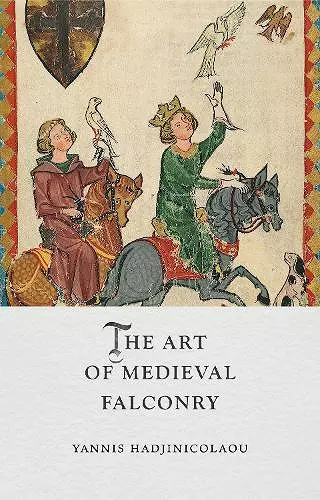The Art of Medieval Falconry
Format:Hardback
Publisher:Reaktion Books
Published:15th Jul '24
Should be back in stock very soon

The art of falconry was one of the most fascinating aspects of medieval society. For medieval people falconry was not just about hunting, it encapsulated sovereignty, power and diplomacy. This book describes and assesses the visual culture of falconry, tracking how images, traditions and the birds of prey themselves spread throughout the medieval world, along with equipment such as hoods and lures. It shows how falconry was global from its very beginning: Holy Roman Emperor Frederick II hired falconers from far and wide to carry out his ‘art of hunting with birds’. This beautifully illustrated account shows how different cultures impacted the visual sphere of medieval falconry, both in the East and West.
The book contributes to our understanding of the interconnectedness of the medieval world, where ideas, goods, people and images regularly passed across geographical and cultural borders. The fashionable idea of a “global Middle Ages” is sometimes overstated, yet in the case of falconry itis clear that depictions of the practice, alongside equipment, techniques, birds and even falconers, travelled widely across medieval Eurasia and North Africa. -- Sebastian Dows-Miller * Times Literary Supplement *
A slim, rich entry into the Medieval Lives series. As Hadjinicolaou makes convincingly clear, it is the living bird that is a jewel beyond price. And it is the relationship between falcon and falconer that was considered glorious. -- Laura Jacobs * Wall Street Journal *
In the new, punningly titled Art of Medieval Falconry, Yannis Hadjinicolaou examines the sport as practiced in medieval Europe and beyond, as well as the legacy of illustration it left in manuscripts, paintings, tapestries, and more. * New Criterion *
This book defines world–art–history in its strictest sense, containing the deep history from medieval times to our actual history. The iconography of falconry flies far above the distinction in East and West, without negating the differences. Beyond all, the relationship between human and falcon becomes a superb example of political iconology. * Horst Bredekamp, Professor of Art History, Humboldt University of Berlin *
What an eye-opening book! With Hadjinicolaou we soar across vast expanses of time and space to alight and linger on verdant branches of medieval visual, material and textual culture. From here we learn to see how tightly entwined the avian and human realms were. Able to survey the world from the heavens yet subject to human control, falcons, we learn, were far more than aristocratic accessories; they were vital instruments in the structuring of society, the fashioning of the self and the delimitation of what it was to be human. * Jacqueline Jung, Professor of History of Art, Yale University *
This is a most interesting book on the imagery of falcons, especially in respect to how they interact with humans. The author fully exploits the political and social implications of depictions of falcons, which are much greater than might be presumed. The book is as much a social history as a description of bird lore. * Charles Burnett, Professor of the History of Islamic Influences in Europe, The Warburg Institute *
Falconry has fascinated mankind for centuries as a global, aristocratic pleasure. The Art of Medieval Falconry is vividly dedicated to the cultural history of this form of hunting in the Middle Ages. Yannis Hadjinicolaou delves into how falcons have served, and continue to serve, as diplomatic gifts worldwide, looks at their depictions documenting the making of courtly self-images, and explores why the birds of prey themselves can certainly be regarded as flying ambassadors of political iconography. * Uwe Fleckner, Professor of Art History, University of Hamburg, and Director of the Advanced School of Art and Humanities, China Academy of Art, Hangzhou *
ISBN: 9781789149104
Dimensions: unknown
Weight: unknown
232 pages